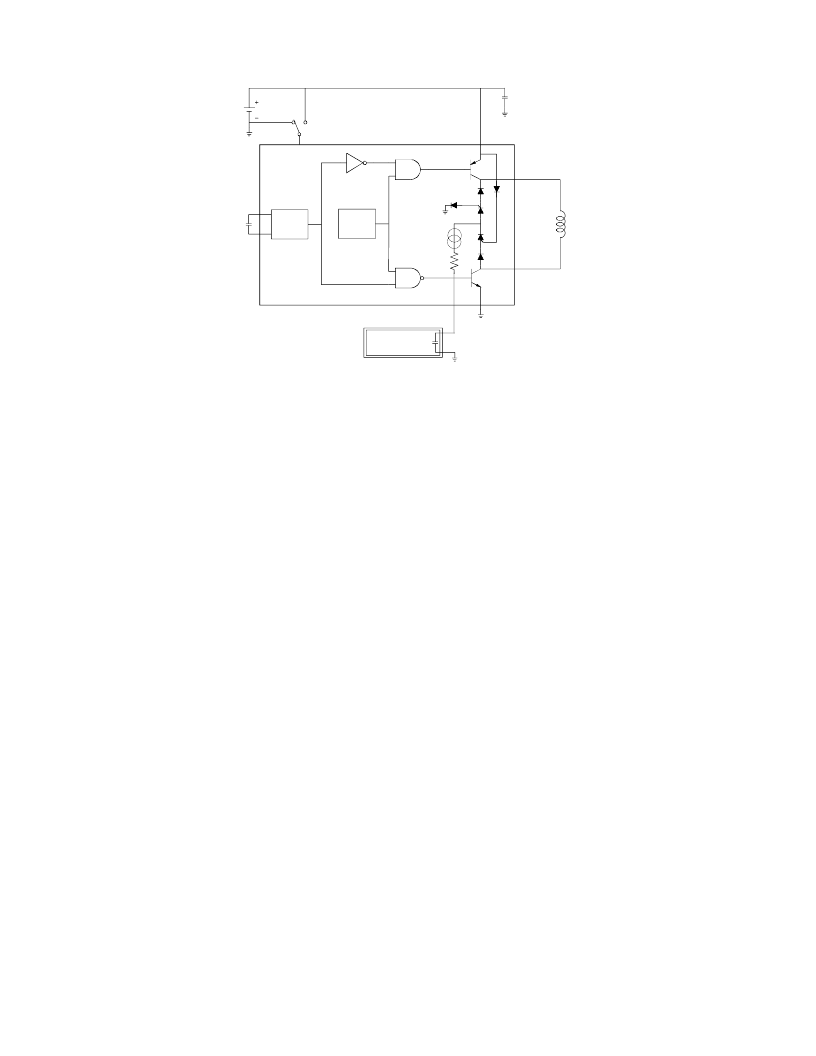- 您現(xiàn)在的位置:買(mǎi)賣(mài)IC網(wǎng) > PDF目錄376528 > D355B EL Drivers(EL驅(qū)動(dòng)器) PDF資料下載
參數(shù)資料
| 型號(hào): | D355B |
| 英文描述: | EL Drivers(EL驅(qū)動(dòng)器) |
| 中文描述: | EL驅(qū)動(dòng)(薩爾瓦多驅(qū)動(dòng)器) |
| 文件頁(yè)數(shù): | 4/14頁(yè) |
| 文件大小: | 344K |
| 代理商: | D355B |
第1頁(yè)第2頁(yè)第3頁(yè)當(dāng)前第4頁(yè)第5頁(yè)第6頁(yè)第7頁(yè)第8頁(yè)第9頁(yè)第10頁(yè)第11頁(yè)第12頁(yè)第13頁(yè)第14頁(yè)

4
Theory of Operation
Electroluminescent (EL) lamps are essentially capacitors with one transparent electrode and a special phosphor material
in the dielectric. When a strong AC voltage is applied across the EL lamp electrodes, the phosphor glows. The
required AC voltage is typically not present in most systems and must be generated from a low voltage DC source.
Thus, Durel developed its patented Three-Port (3P) switch-mode inverter circuit to convert the available DC supply
to an optimal drive signal for high brightness and low-noise EL lamp applications. The Durel 3P topology offers the
simplicity of a single DC input, single AC output, and a shared common ground that provides an integrated EMI
shielding.
The D355B drives the EL lamp by repeatedly pumping charge through an external inductor with current from a DC
source and discharging into the capacitance of the EL lamp load. With each high frequency (HF) cycle the voltage on
the lamp is increased. At a period specified by the lamp frequency (LF) oscillator, the voltage on the lamp is discharged
to ground and the polarity of the inductive charging is reversed. By this means, an alternating positive and negative
voltage is developed at the single output lead of the device to one of the electrodes of the EL lamp. The other lamp
electrode is commonly connected to a ground plane, which can then be considered as electrical shielding for any
underlying circuitry on the application.
The EL driving system is divided into several parts: on-chip logic and control, on-chip high voltage output circuitry,
discharge logic circuitry, and off-chip components. The on-chip logic controls the output frequency (LF), as well as the
inductor switching frequency (HF), and HF and LF duty cycles. These signals are combined and buffered to regulate
the high voltage output circuitry. The output circuitry handles the power through the inductor and delivers the high
voltage to the lamp. The selection of off-chip components provides a degree of flexibility to accommodate various lamp
sizes, system voltages, and brightness levels. Since a key objective for EL driver systems is to save space and cost,
required off-chip components were kept to a minimum.
Durel provides a D355B Designer
’
s Kit, which includes a printed circuit evaluation board intended to aid you in
developing an EL lamp driver configuration using the D355B that meets your requirements. A section on designing
with the D355B is included in this datasheet to serve as a guide to help you select the appropriate external components
to complete your D355B EL driver system.
Typical D355B configurations for driving EL lamps in various applications are shown on the following page. The
expected system outputs, such as lamp luminance, lamp output frequency and voltage and average supply current
draw, for the various sample configurations are also shown with each respective figure.
Block Diagram of the Driver Circuitry
High
Frequency
Oscillator
Low
Frequency
Oscillator
EL Lamp
CLF1
CLF2
E'
V+
L+
L-
GND
VOUT
F
1.0
μ
相關(guān)PDF資料 |
PDF描述 |
|---|---|
| D355B | Electroluminescent Lamp Driver IC |
| D356A | EL Drivers(EL驅(qū)動(dòng)器) |
| D356A | Electroluminescent Lamp Driver IC |
| D356B | Electroluminescent Lamp Driver IC |
| D360SC4M | Schottky Rectifiers (SBD) (40V 360A) |
相關(guān)代理商/技術(shù)參數(shù) |
參數(shù)描述 |
|---|---|
| D355B1 | 制造商:未知廠家 制造商全稱(chēng):未知廠家 功能描述:Interface IC |
| D355B2 | 制造商:未知廠家 制造商全稱(chēng):未知廠家 功能描述:Interface IC |
| D-355F | 制造商:Triad Magnetics 功能描述: |
| D-356 | 制造商:Triad Magnetics 功能描述: |
| D-356-06 | 制造商:MOLEX 制造商全稱(chēng):Molex Electronics Ltd. 功能描述:VersaKrimp? Ring Tongue Terminal for 8 AWG Wire |
發(fā)布緊急采購(gòu),3分鐘左右您將得到回復(fù)。